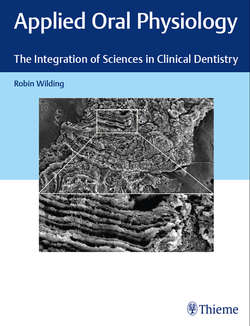Читать книгу Applied Oral Physiology - Robin Wilding - Страница 75
На сайте Литреса книга снята с продажи.
4.3.5 Variations in Plaque
ОглавлениеPlaque in different sites has different characteristics. For example, the plaque found on maxillary incisors may have a lower pH than the mandibular incisor plaque. The reason for this difference is due to the exposure of the anterior teeth to the drying effect of air flow around them. The reduction in saliva flow surrounding these teeth diminishes the buffering effect of saliva, and the plaque becomes relatively acidic. The proximity of the lower incisors to the duct openings of the sublingual and submandibular glands ensures an abundant supply of salivary buffers to the plaque on lower incisors, reducing its acidity. The deposits of calculus on mandibular anterior teeth are due to the higher resting pH level, higher calcium levels, and reduced ionic strength of submaxillary saliva. On the other hand, the labial surfaces of the maxillary incisors are infrequently in contact with saliva, and so plaque pH may drop to below the critical level for dissolution. This may account for the tendency for caries to develop in the maxillary incisors before the mandibular incisors.
A measure of the oxygen supply is the oxidation potential (Eh) and is an important factor in the environment for anaerobic organisms. Areas with high Eh values are the exposed surfaces of the teeth and oral mucosa and are unsuitable for anaerobic organisms. Areas with low Eh values are the stagnant areas far from atmospheric oxygen such as the interproximal embrasures, occlusal fissures, and gingival sulcus. These structural habitats may be modified by the other environmental factors, such as the amount of sugar in the host diet, the level of oral hygiene, and flow of saliva.
Fig. 4.11 A diagrammatic representation of the diversity of organisms in mature plaque. Gingivitis develops after a 20-day period during which there is a cessation of oral hygiene. As the plaque matures, the number of organisms increases and the biofilm becomes more diverse.
Some oral organisms such as the motile rods and spirochetes are quite fastidious and need particular nutrients. These nutrients may only be produced by other organisms in the gingival sulcus.
It is of clinical importance to be able to measure the amount of plaque on the teeth as it is an indication of the effectiveness of oral hygiene. While plaque is visible as a white coating on the teeth, it is more readily seen if a stain is used. There are several methods of measuring plaque, but most use an index which records a score of how many surfaces are covered with plaque. Of perhaps even greater importance than the plaque index (amount of plaque) is the rate at which it forms. The rate of plaque formation is surprisingly not influenced by the plaque index but by the position of the tooth in relation to the lips; the rate increases with distance from the lips and is highest on the buccal surfaces of maxillary molars and lowest on the mandibular incisors.
